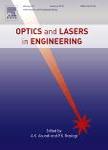版权所有:内蒙古大学图书馆 技术提供:维普资讯• 智图
内蒙古自治区呼和浩特市赛罕区大学西街235号 邮编: 010021

作者机构:Tianjin Univ Sch Civil Engn Tianjin 300350 Peoples R China Univ Sci & Technol Beijing Res Inst Urbanizat & Urban Safety Sch Civil & Resource Engn Beijing 100083 Peoples R China
出 版 物:《OPTICS AND LASERS IN ENGINEERING》 (工程光学与激光)
年 卷 期:2024年第175卷
核心收录:
学科分类:070207[理学-光学] 07[理学] 08[工学] 0803[工学-光学工程] 0702[理学-物理学]
基 金:Major Pro-gram of National Natural Science Foundation of China [52192663 52192662]
主 题:Digital image correlation (DIC) Deep learning Conditional diffusion model Speckle image generation Evaluation metrics
摘 要:Generating speckle images is crucial for calibrating errors in digital image correlation (DIC) algorithms, alleviating the scarcity of training data for deep learning -based DIC algorithms, and even for the broader application of digital speckle methods. Traditional methods for speckle image synthesis struggle to accurately replicate the brightness variations in the foreground and background of realistic speckle images, and these methods come with high computational costs. Additionally, there needs to be more scientific and systematic evaluation methods for the quality of generated DIC speckle images. Our study presents a high-fidelity method for generating DIC speckle images with cracks based on a conditional diffusion model. We established evaluation metrics for generated DIC speckle images based on multiscale spatial and spectrum domains. We verified them on an open -source dataset of DIC speckle images depicting cracks in stone masonry walls. The conditional diffusion model excels at forward tasks (DIC crack image segmentation) and inverse tasks (DIC speckle image generation), with particular strength in the latter. The proposed spatial and multiscale spectrum domain metrics allow for the comprehensive and accurate evaluation of the alignment between the synthetic and natural speckle images. The conditional diffusion model for DIC speckle image generation and evaluation proposed in this paper has the potential to enhance further the accuracy and robustness of DIC technology in experimental mechanics and engineering applications.